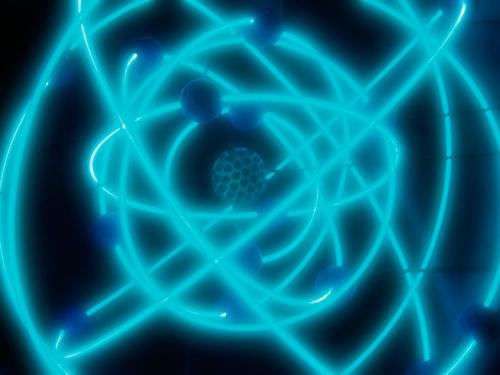Molecular physics
Molecular physics and thermodynamics are sections of physics that study macroscopic processes occurring in bodies that are associated with a large number of atoms and molecules contained in them.
Molecular physics studies the structure and propertiessubstances from the side of molecular - kinetic representations, which are based on the fact that any body consists of molecules (particles) that are in constant chaotic motion. Molecular physics studies the processes of the cumulative effect of a colossal number of molecules.
Thermodynamics studies the general properties of a system (macroscopic) that is in thermodynamic equilibrium.
The study of macroscopic processes is carried out using two methods:
1. molecular-kinetic (molecular physics is based on this method);
2. thermodynamic, underlies thermodynamics.
These methods complement one another.
Molecular physics is based onmolecular-kinetic theory, according to which the structure and properties of bodies are explained by the chaotic motion and interaction of molecules, atoms and ions (ie particles). Experimentally observed properties of bodies (for example, pressure) are explained by the result of the action of particles, that is, the properties of the entire macroscopic system depend on the properties of the particles, the features of their motion and the average values of the dynamic characteristics of the particles. Determine the exact location of the particle in space and its momentum is not possible, but a huge number of them makes it possible to effectively use the molecular-kinetic (statistical) method, since there are certain regularities in the behavior of the average parameters.
The main provisions of the molecular-kinetic theory are:
1. Any substance consists of particles - molecules and atoms, and those of smaller particles;
2. Molecules, atoms and other particles are in continuous chaotic motion;
3. There is an attractive force between the particles and a repulsive force.
Molecular physics are considered: structure of gases, solids and liquids, their change under external influence (pressure, temperature, magnetic and electric fields), transport phenomena (internal friction, thermal conductivity, diffusion), phase transition processes (evaporation and condensation, crystallization and melting, etc. .), phase equilibrium, critical state of substances.
Thermodynamics studies thermal processes thatare associated with changes in body temperature and its aggregate state. Thermodynamics is not concerned with the consideration of microprocesses, it is concerned with the establishment of connections existing between the macroscopic properties of substances. Thermodynamic system is a set of interacting and exchanging energy between themselves and with the external environment of macroscopic bodies. The task of the thermodynamic method is to determine the state in which the thermodynamic system is located at any time. The set of characterizing properties of the system (pressure, temperature, volume) of physical quantities determines its state.
The thermodynamic process is the change in the thermodynamic system, connected with the change in its parameters.
Molecular chemistry is the science of the composition, structure, and physical properties of matter.
Physical properties of substances:
1. aggregate state (solid, gas, liquid);
2. The smell;
3. color;
4. density;
5. solubility;
6. electrical and thermal conductivity;
7. The temperature of melting and boiling.
Any substance consists of atoms and molecules, ions.
An atom is a tiny particle of matter, consisting of a positively charged nucleus and a negatively charged electron shell.
The proton carries a positive charge. Also in the core are neutral elementary particles - neurons. The unit of negative charge is an electron.





